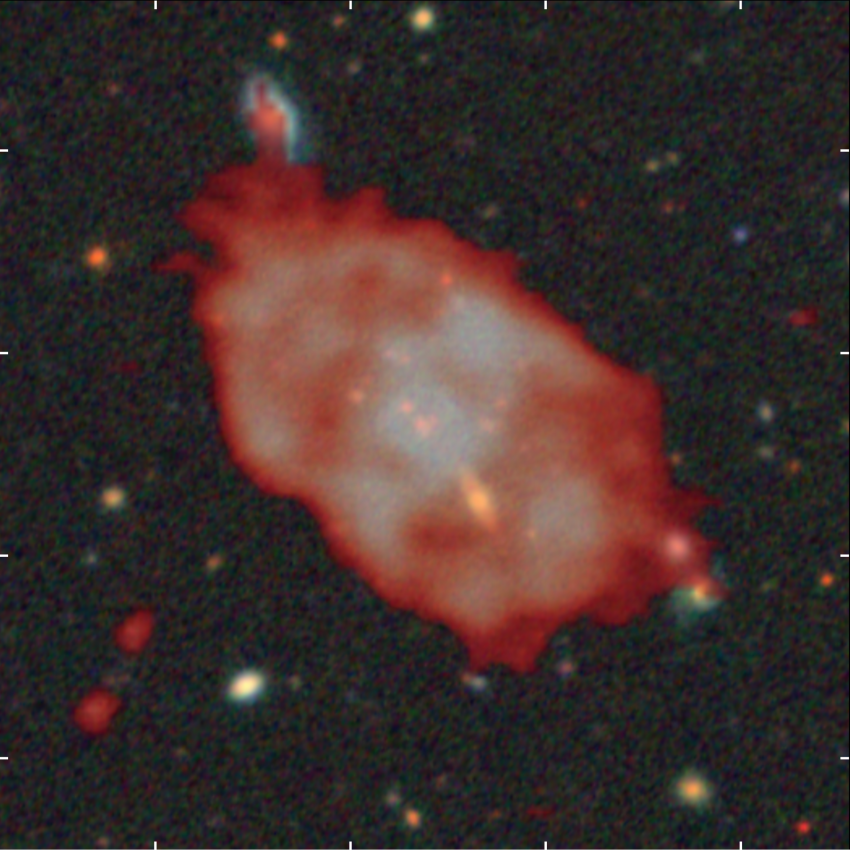Citizen scientists just discovered the most powerful 'odd radio circle' twins in space we've ever seen
The largest of three newly found ring shaped structures in the cosmos are almost a million light-years across.
Citizen scientists have found several new "odd radio circles<" or ORCs, in distant, enormous galaxy clusters — and through their discoveries, scientists are learning more about how these huge ring-like structures form.
ORCs were first identified only six years ago, in 2019, by Anna Kapinska of the National Radio Astronomy Observatory while perusing observations made by the Australian Square Kilometre Array Pathfinder (ASKAP). ORCs are huge, up to 50 times larger than our Milky Way galaxy, which itself is about 100,000 light-years across. They are invisible at optical, infrared and X-ray wavelengths, their ghostly structures detectable only by radio telescopes.
"ORCSs are among the most bizarre and beautiful cosmic structures we've ever seen, and they may hold vital clues about how galaxies and black holes co-evolve, hand-in-hand," said Ananda Hota of the University of Mumbai, who led the research, in a statement.
So far, only eight ORCs have been positively identified in the entire universe, but these three new discoveries suggest they may be more commonplace than astronomers thought.
The team's discovery comes courtesy of citizen scientists sifting through data on the RAD@home Astronomy Collaboratory, which is India's first citizen science platform and is the brainchild of Hota.
The radio rings were then confirmed by LOFAR, the Low Frequency Array of radio antennas across Western Europe and centered in The Netherlands.
One of the newly discovered ORCs is actually two enormous, expanding rings 978,000 light-years across, embedded in a haze of diffuse radio emission 2.6 million light-years across that is connected to a giant radio galaxy catalogued as RAD J131346.9+500320 (the numbers relate to its coordinates on the celestial sphere in right ascension and declination respectively). This is only the second time that twin ORCs have been found, and at a distance of about 7 billion light-years (a redshift of 0.94), it is the most distant and most powerful ORC system found so far. Hota's team suspect that the rings are relics, produced by some previous outburst from the galaxy, that are being re-energized by a superwind of radiation blasting out from either black-hole activity or a starburst in the center of RAD J131346.9+500320.
Breaking space news, the latest updates on rocket launches, skywatching events and more!
Two more large, ring-shaped, radio-emitting structures were found associated with giant radio galaxies a little closer to home, both about 1.3 billion light-years away (redshifts of about 0.1). Intriguingly, these ORCs seem to be related to radio jets blasting out from each of the galaxies. Radio jets are powerful beams of charged particles produced by energies in the vicinity of a supermassive black hole lurking at the core of an active galaxy. As the jets spiral around magnetic-field lines, they produce radio emission in the form of synchrotron radiation.
In one of the galaxies, catalogued RAD J122622.6+640622 and with diffuse radio emission spanning a truly gargantuan 3 million light-years, one of the radio jets is bending sideways and flowing back towards the galaxy. At the end of this diverted jet is a huge ring of radio emission, 100,000 light-years across.
In the other giant radio galaxy, RAD J142004.0+621715 which has a 1.4-million-light-year-wide emission, one of the jets is also found to end in a large ring of radio emission.

What all three galaxies have in common is that they are found in massive galaxy clusters filled with a thick fog of hot plasma known as the intra-cluster medium. Particularly in the case of the latter two galaxies, the radio jets seem to be interacting with the intra-cluster medium, which is a thick fog of hot plasma that fills galaxy clusters, and this interaction is shaping both the jets and the radio rings.
"These discoveries show that ORCs and radio rings are not isolated curiosities," Pratik Dabhade of the National Center for Nuclear Research in Warsaw, Poland, said in the statement. "They are part of a broader family of exotic plasma structures shaped by black-hole jets, winds and their environments."
The findings are a win for citizen science and the power of humans looking through data in the face of a world increasingly dominated by A.I. machine learning that is taking discoveries out of the hands of people.
"The fact that citizen scientists uncovered them highlights the continued importance of human pattern recognition, even in the age of machine learning," said Dabhade.
Moving forward, many more ORCs are expected to be found by the Square Kilometre Array, which is a giant radio telescope network based in South Africa and Australia that will come online by the early 2030s.
The findings were published on Oct. 2r in the journal Monthly Notices of the Royal Astronomical Society.

Keith Cooper is a freelance science journalist and editor in the United Kingdom, and has a degree in physics and astrophysics from the University of Manchester. He's the author of "The Contact Paradox: Challenging Our Assumptions in the Search for Extraterrestrial Intelligence" (Bloomsbury Sigma, 2020) and has written articles on astronomy, space, physics and astrobiology for a multitude of magazines and websites.
You must confirm your public display name before commenting
Please logout and then login again, you will then be prompted to enter your display name.
